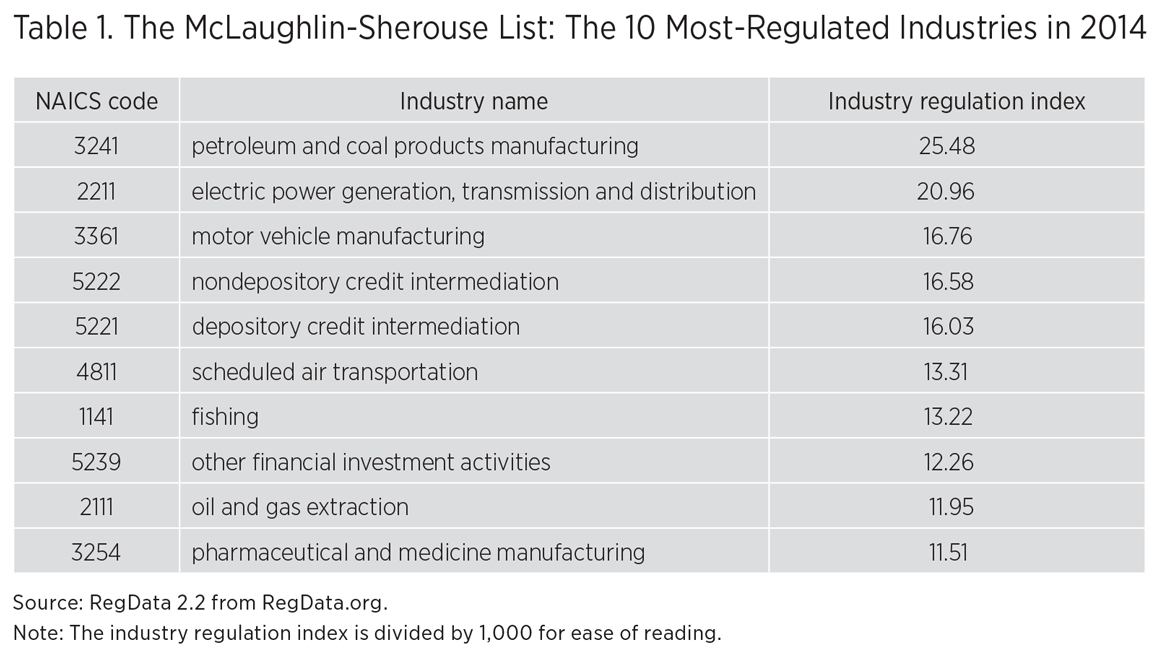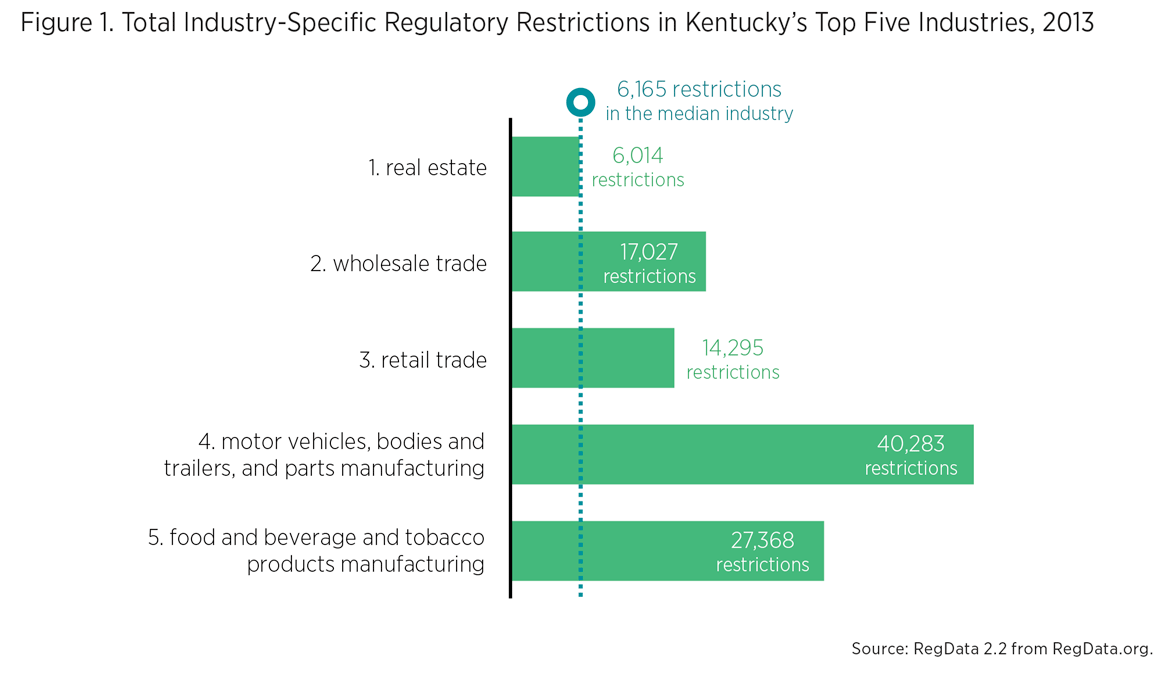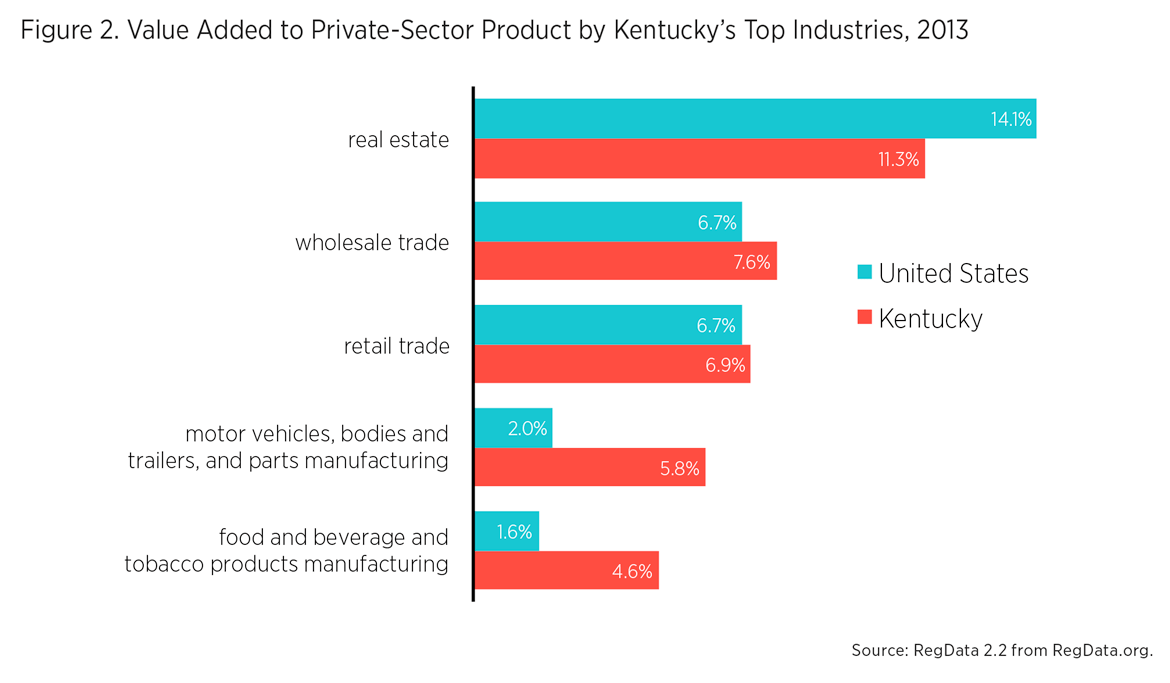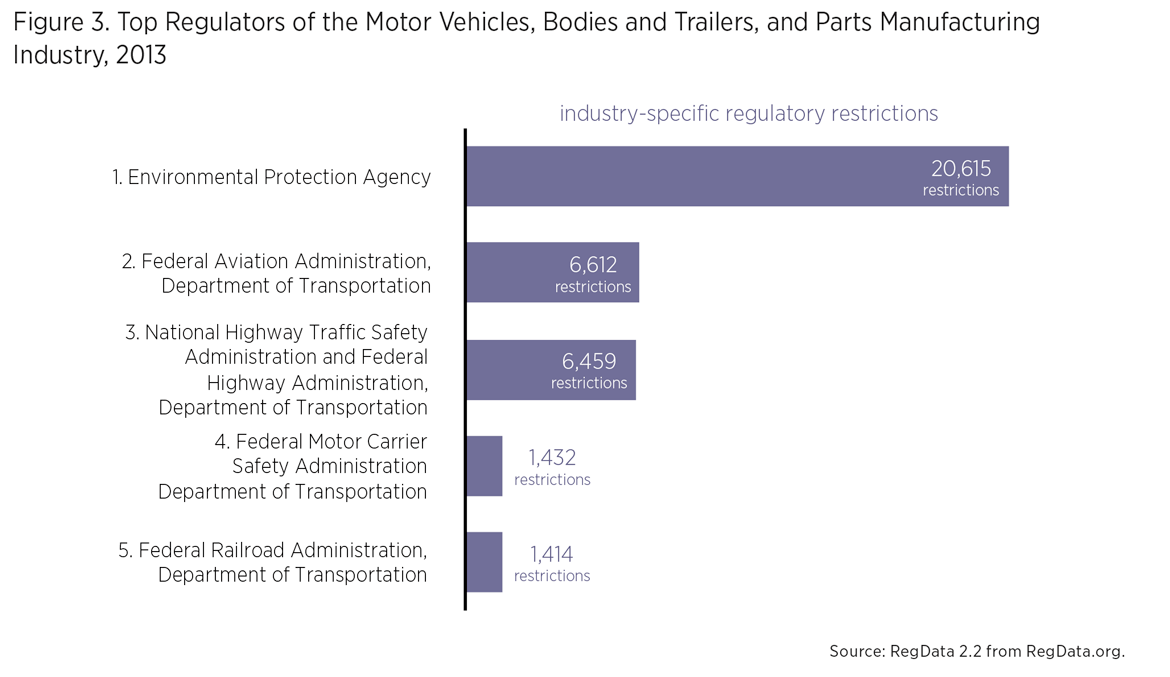- | Regulation Regulation
- | Policy Briefs Policy Briefs
- |
The Impact of Federal Regulation on Kentucky
Federal regulation is applicable in the same way in all 50 states. Each state’s economy, however, includes a unique mix of industries, so federal policies that target specific sectors of the economy will affect states in different ways. For 2013, Kentucky scored a 1.30 on the FRASE index. By design, the FRASE index for the United States overall in any year will equal 1, so a score of 1.30 indicates that the impact of federal regulation on Kentucky’s industries was about 30 percent higher than the impact on the nation overall.
Federal regulation is applicable in the same way in all 50 states. Each state’s economy, however, includes a unique mix of industries, so federal policies that target specific sectors of the economy will affect states in different ways.
Federal regulations can, by design, target some industries more than others. For example, the Dodd-Frank Wall Street Financial Reform Act of 2010 directed federal regulatory agencies to create approximately 400 new regulations targeting the financial services sector.1 These new regulations will have a national effect because financial services matter in all states, but they will be felt more in New York than in South Carolina, simply because of the relative importance of the financial services industry in the former state.
Using the RegData database, we can examine the relative impact of federal regulation on a particular state. RegData creates an industry regulation index by counting the number of words and phrases in the Code of Federal Regulations that indicate a specific mandated or prohibited activity and then by classifying those regulatory “restrictions” according to which industry or industries they likely target. The 10 most-regulated industries in the United States for 2014 are listed in table 1.
By weighting industry restrictions using the importance of an industry to a state relative to its importance to the country overall, we can produce a single Federal Regulation and State Enterprise (FRASE) index that measures the impact of federal regulation on individual states. The index is thus a ratio of the impact of federal regulations on a specific state’s industries to the impact of federal regulations on the nation’s industries in a given year. A value of 1 would indicate that a state’s private sector is affected by federal regulations to exactly the same degree as the national private sector, while a score higher than 1 would indicate a higher impact of federal regulation on a state’s private sector.
For 2013, Kentucky scored a 1.30 on the FRASE index. By design, the FRASE index for the United States overall in any year will equal 1, so a score of 1.30 indicates that the impact of federal regulation on Kentucky’s industries was about 30 percent higher than the impact on the nation overall.

While there is some fluctuation from year to year in the ratio of the impact of federal regulation on the state to its impact on the nation, more dramatic growth occurs in the total number of such regulatory restrictions affecting the state since 1997. One way to measure this impact is to scale the weighted restrictions to the total weighted restrictions for the national economy in 1997. Doing so allows us to calculate the growth of the FRASE index relative to 1997. For Kentucky, the FRASE index, scaled by total weighted restrictions for 1997, has grown by 43 percent from 1997 to 2013.
So why is the impact of federal regulation higher for Kentucky than for the country overall? The answer lies in the particular industries that make up the state’s economy and how regulated those industries are. The quantities of regulatory restrictions affecting the top five industries by contribution to Kentucky’s private sector are shown in figure 1, and the contributions of those industries to the state and national private sector are compared in figure 2.
While the motor vehicles, bodies and trailers, and parts manufacturing industry is only the fourth- largest industry in Kentucky, it contributes the most to the state’s FRASE score. First, the industry is highly regulated, subject to more than 40,000 industry-relevant restrictions. Second, the industry is almost three times as important to Kentucky as to the country overall, contributing up to 5.8 percent of the state’s private sector as opposed to 2.0 percent of the nation’s.
Figure 3 shows the top five regulators of the motor vehicles, bodies and trailers, and parts manufacturing industry. The top regulator is the Environmental Protection Agency, which accounts for more than 20,000 restrictions. The other top agencies are, in descending order, the Federal Aviation Administration, a combination of the National Highway Traffic Safety Administration and the Federal Highway Administration, the Federal Motor Carrier Safety Administration, and the Federal Railroad Administration. Unsurprisingly, these regulators comprise a mix of environmental and transportation-focused agencies.



The landscape of federal regulations can change from year to year, as can the makeup of a state’s economy. As those changes occur, residents of those states may have to learn new sets of regulations or deal with different regulators and regulations. Policymakers from Kentucky are uniquely situated to comment on the impact of federal regulation in their state and whether this impact is adequately represented in the current debate about regulatory and legislative impact accounting.2



